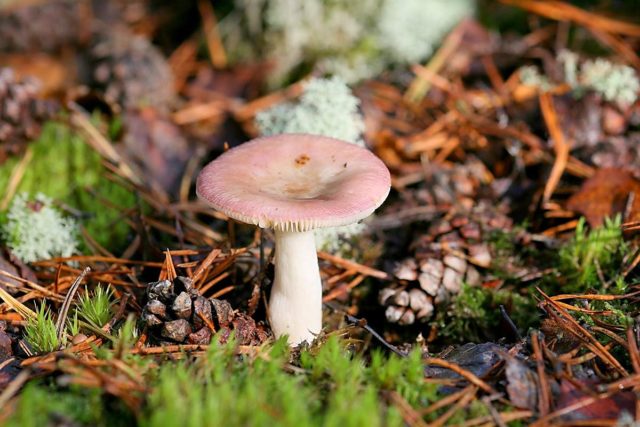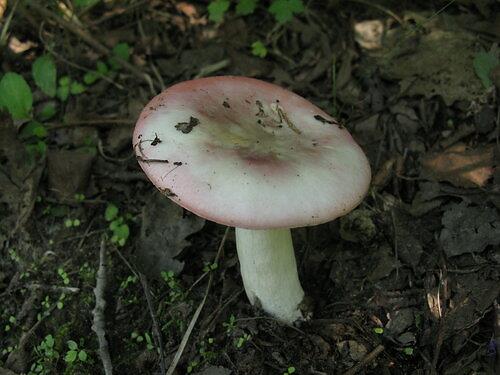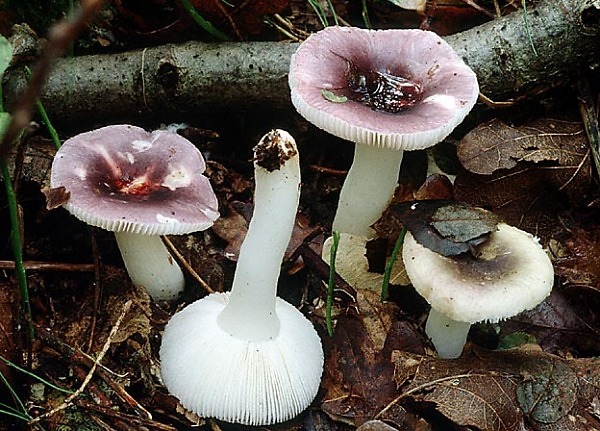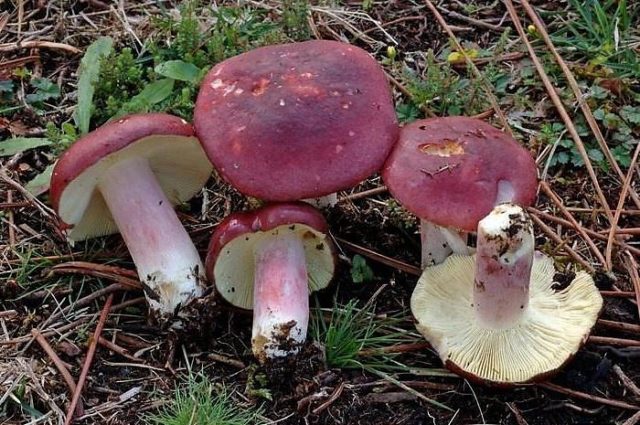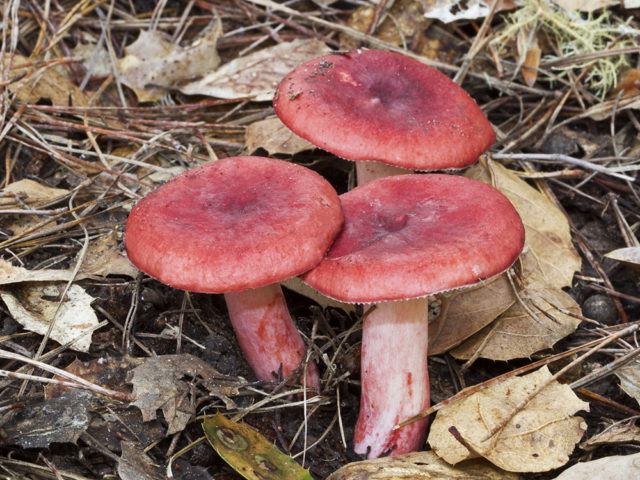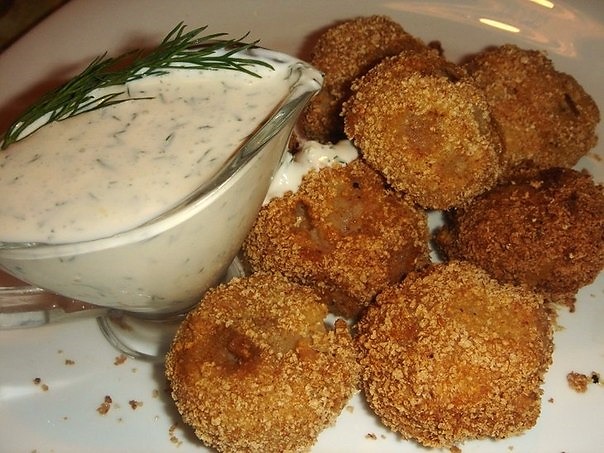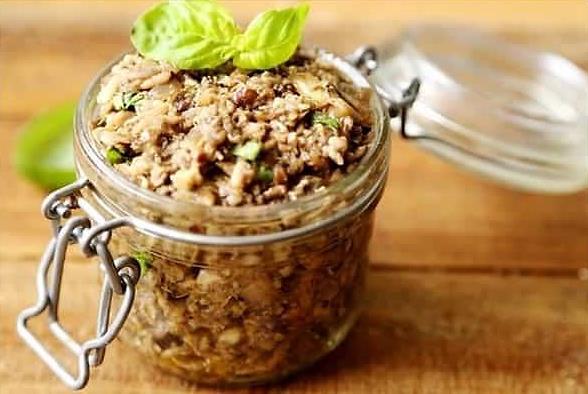Content
Birch russula is a mushroom included in the species of russula. It is considered conditionally edible, which means that it can be eaten only after heat treatment or conservation. The main thing is to get rid of the pungent taste and toxic film on the cap.
Where birch russula grow
This variety loves moist soils and cool places, therefore it grows in the northern regions: Russia, Ukraine, Belarus, Great Britain, Scandinavia. From the name it is clear that birch russula are comfortable in birch forests. They can also be found among the conifers, next to which birches grow, as well as on swampy soils.
What birch russula look like
In appearance, typical russula with a pale copper-red or light lilac color. The stem of the mushroom is light, almost white. Brittle, flat, depressed in the center, with a yellowish center, the cap grows up to 5 cm in diameter. Young birch representatives of the Syroezhkov family are distinguished by a wavy edge. The skin is always removed from them easily.
The plates of birch russula are rare and brittle, and their flesh is fragile, grayish. The leg is even or slightly narrowed to the cap, it is strong in structure, but becomes brittle with increased moisture. Spores of the birch variety of Syroezhkovy are white.
Is it possible to eat birch russula
Traditionally, birch russula are not used in cooking, because, according to the classification, they belong to the conditionally edible category. This means that with additional processing, representatives of this species do not cause poisoning, but their skin contains toxins that irritate the intestines. If the mushroom is thermally processed, having previously peeled it off, it will lose its bitterness and become usable.
Taste qualities
Birch russula is not the tastiest of the family. It is bitter, with pronounced pungent notes. But this quality does not interfere with the preservation of the product: the pickles are saturated.
The flesh of the fruits is fragile, its texture is pleasant, but it is difficult to bring birch representatives of the Syroezhkovy family out of the forest whole from the forest, it is necessary to carefully put them in a basket, leaving enough space so as not to squeeze the fruit bodies. When cooked properly, the caps and legs are great for stir-fry, pasta, and soups.
Benefit and harm
Recently, this variety has been valued in folk medicine as a detox. The product cleanses the stomach and intestines, removes toxins and toxins from the body. Mushroom raw materials contain rare vitamins: E, PP, group B and C.
With a low calorie content (less than 19 kcal per 100 g), birch russula are enriched with fatty acids, disaccharides, monosaccharides and dietary fiber. The product also contains a trace element set: sodium, potassium, phosphorus, iron and magnesium. The lecithin content prevents the deposition of cholesterol plaques.
It is interesting that, in addition to the benefits for the human body, the mushroom is actively used in cheese making. The enzyme russulin contained in the product accelerates the clotting of milk.
Birch representatives of the Syroezhkovy family are toxic if improperly prepared. Eaten raw, they cause diarrhea, bloating, and nausea. This type is long and poorly absorbed by the body, so the maximum daily portion is 150 grams, while it is better for children and the elderly not to eat russula.
Collection rules
The calendar of mushroom ripeness is capricious: in different years, more or less fruits appear, depending on weather conditions. The harvest season starts in July and ends in mid-October. It is correct not to pull out a birch russula, but to cut it off with a sharp knife so as not to damage the mycelium and get a new crop next season.
False doubles of birch russula
There are more than 10 varieties of false russula, they all have a pronounced bitter taste and unpleasant odor, often brightly colored. They will not provoke serious poisoning, but they burn mucous membranes, irritate the stomach, cause a gag reflex, and disrupt the digestive tract. The main false species are:
- Russula the most graceful... It completely copies the birch variety, but still belongs to the false mushroom. His hat is paler and slightly smaller, but the same flat and concave. The taste is sharper. The leg is long, 5 - 6 cm long, hollow, with a pinkish or gray tinge. This double does not cause severe poisoning, but after its use, nausea and diarrhea will appear.
- Russula fragile... It is distinguished by an unstable color: it can be red-violet, olive-green, gray, white, yellowish. She has rare plates, a slimy, finely scaly skin. These mushrooms are inedible due to their pungent bitter taste and unpleasant odor.
- Purplish brown russula... You can distinguish them from birch by their specific smell, reminiscent of the one that a snuffbox or cigarette case has. Their spore powder is ocher, the taste of the caps is unpleasantly bitter. Young fruits have a lilac-red tone.
- Russula pink... It has a cap 4-10 cm in diameter, a hemispherical shape, which later unfolds, becomes concave in the center. The surface of the mushroom is dry, with an even thick edge; in wet weather it becomes slightly sticky. A distinctive feature is a pink-red color with indistinct white-yellow spots and a non-removable skin.
You can learn more about pink russula from the video:
How to cook birch russula
Birch russula mushrooms have not only unique nutritional qualities, but also smell good. Dishes cooked in such a mushroom broth with the addition of hats and legs absorb all the nutrients and have a rich aroma.
Birch russula belong to the category of conditionally edible, allowed for consumption only after heat treatment, which also removes bitterness. As for the pungency, it cannot be removed by frying, so it is better to marinate or cook the fruits. They are pre-washed, sorted and cleaned from the top film, which contains toxins.
Cold canned snacks are often made from birch russula. To prepare the hats in breadcrumbs you will need:
- large caps (300 - 500 g);
- egg;
- 200 g flour;
- 100 g bread crumbs;
- salt;
- sunflower oil (0.5 - 1 l)
Cooking procedure:
- Peel the hats and cut them into halves.
- Stir the egg, add salt.
- Dip each part in an egg, flour, and crackers.
- Throw in boiling oil, fry.
- Divide into half-liter jars, sterilize for 1 tsp.
Store workpieces in a dark place.
Fragrant mushroom caviar is obtained from russula, for the preparation of which you will need:
- 1 kg of mushroom mass;
- 50 g salt;
- onions (1 - 2 heads);
- sunflower oil (500 g).
Sequencing:
- The russula are washed, peeled and peeled, boiled for 30 minutes, removing the foam.
- Then they are folded on a towel or in a canvas bag to dry for 4 hours.
- Finely chop or grind in a meat grinder with an onion head, add salt and pepper to taste.
- The resulting mass is spread in jars and poured with hot vegetable oil.
- Then they are rolled up with lids.
The blanks are stored in the refrigerator for up to 2 months.
Birch russula can also be salted in barrels. To do this, the mushrooms are stacked (legs up) in a container, sprinkled with salt, the top layer is currant leaves, horseradish and garlic. A fern is laid out on the very top, everything is poured with boiling water and left for 40 days.
Conclusion
Birch russula is not a versatile mushroom. When preparing it, difficulties arise: you need proper cleaning, processing, exposure. Real gourmets who know a lot about the bitter-spicy aftertaste are capable of evaluating the properties of such fruits. Collecting such mushrooms is recommended for mushroom pickers with experience.
